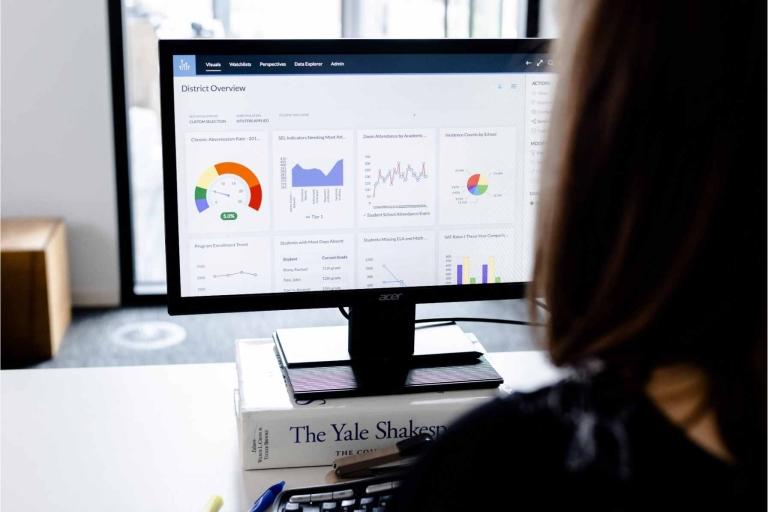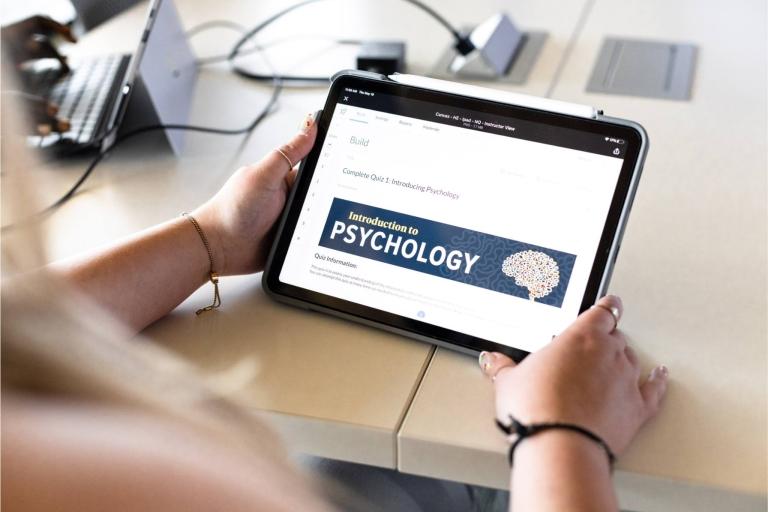In the pursuit of equity and access for all learners, digital accessibility is a key foundation of the modern student experience.
Still, while significant strides in accessibility delivered through technology were made during the pandemic, many students today have little or no access to technology, edtech tools, and reliable Wi-Fi or broadband connections.
In fact, access to technology remains one of the biggest roadblocks for many students, according to our 2023 State of Higher Education survey.
Meanwhile, 82% of students and educators believe that access to technology is one of the biggest factors of student engagement and success.
Higher education institutions are responding to this need, offering a variety of solutions to help students access technology, including providing technology equipment to students who cannot access it, offering hybrid learning options, and providing mobile app access to the LMS.
- Build Mobility in the Student Experience
Providing mobile access to coursework and programs can help close the digital equity gap, by helping to ensure that more students gain access to education and stay engaged throughout their journeys and recognizing that not all students have access to laptops or tablets.
And since 99% of students do have access to a smartphone, the ability to access assignments, check grades, and being able to communicate with faculty and other students via mobile can extend convenience and accessibility to students, enhancing their opportunity for success.
Mobility and Accessibility at Palo Alto College
Reaching students where they are is a big priority for Palo Alto College, which serves Texas communities facing some of the highest levels of income inequality in the nation. The school uses Canvas Mobile App to provide essential access that reliably boosts success for students and faculty.
“There are some times that my internet is not the best and I have the opportunity to grab my phone and access anything that I need when my laptop isn't working or if I'm out and about. It is such a great way to contact your teachers on the go or your classmates and stay connected regardless of where you are,” said Palo Alto College student Lizeth Razo-Robledo.
Watch the video to learn more of the student perspective.
- Make Courses Accessible to Help Provide Options for All Learners
Equally important when it comes to accessibility is the need to create accessible courses. And while there is not one means of instruction or technology that is optimal for all learners in all learning environments, technology can be a powerful tool to provide options for all learners.
Making use of the tools within your LMS can go a long way to better serving every student.
Technology that prioritizes accessible design can equalize opportunity, promote independence and self-learning, and give students the right tools to help them achieve. This includes creating simple clean layouts, clear and consistent navigation, and descriptive and easily scannable headings.
Importantly, formatting for accessibility should include features that enable all students to easily navigate course lessons, materials, assignments, and feedback. That includes alt text that describes embedded images, descriptive hyperlinks that give students context around links, list tools that help readers skim content, emphasized text to help important text stand out for visually impaired students, and tables that help organize and display information, among other tactics.
For more tips on how to incorporate accessible design, access the infographic and the handy Canvas Course accessibility checklist.
Accessible Learning at Durham Technical Community College
With the goal of offering students a more modern, accessible, and flexible, North-Carolina-based Durham Technical Community College moved from Sakai learning management to Canvas LMS.
Key to their success was implementing technology that would be easy for teachers and students alike to learn and use, finding an option that would integrate well with the school’s additional digital tools, and choosing a system that many students had already used in their K-12 educational experience. Check out the case study to see the impact that’s made on students and faculty.
- Choose an LMS Designed for Accessibility
Choosing edtech that’s built to meet industry standards is also important. Canvas LMS is designed for accessibility in a variety of ways. It is built to meet the common Web Content Accessibility Guidelines (WCAG) common standard and is certified WCAG 2.1 AA substantially conformant by a non-profit third party. This single, shared standard is meant to make web content more accessible to anyone with disabilities and can help to ensure accessibility tools and assistive technology will properly work with your courses.
Canvas also features a built-in Accessibility Checker in the Rich Content Editor tool that checks for common accessibility errors while an educator is building out their course content.
These tools can be used to check for the use of color blind-friendly visualizations, for example, or alternate text for images for the visually impaired. We also make it easy to add captioning to a video created in or uploaded to a Canvas course. These simple features take much of the guesswork out of creating accessible courses.
Explore More
Ready to dig deeper into how to prioritize accessibility with the academic experience? Check out our eBook: Accessibility in Higher Education: Building a Better Student Experience.
Related Content
 inst-3step.jpg
inst-3step.jpgBlogs
 13lmsfeaturesthatbenefitstudentlearning.jpg
13lmsfeaturesthatbenefitstudentlearning.jpgBlogs
 community-homepage.jpg
community-homepage.jpgBlogs

